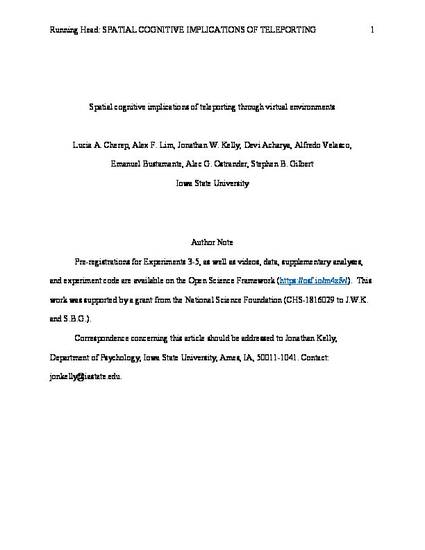
Teleporting is a popular interface to allow virtual reality users to explore environments that are larger than the available walking space. When teleporting, the user positions a marker in the virtual environment and is instantly transported without any self-motion cues. Five experiments were designed to evaluate the spatial cognitive consequences of teleporting and to identify environmental cues that could mitigate those costs. Participants performed a triangle completion task by traversing 2 outbound path legs before pointing to the unmarked path origin. Locomotion was accomplished via walking or 2 common implementations of the teleporting interface distinguished by the concordance between movement of the body and movement through the virtual environment. In the partially concordant teleporting interface, participants teleported to translate (change position) but turned the body to rotate. In the discordant teleporting interface, participants teleported to translate and rotate. Across all 5 experiments, discordant teleporting produced larger errors than partially concordant teleporting which produced larger errors than walking, reflecting the importance of translational and rotational self-motion cues. Furthermore, geometric boundaries (room walls or a fence) were necessary to mitigate the spatial cognitive costs associated with teleporting, and landmarks were helpful only in the context of a geometric boundary.
Available at: http://works.bepress.com/stephen_b_gilbert/79/

This is a manuscript of an article published as Cherep, Lucia A., Alex F. Lim, Jonathan W. Kelly, Devi Acharya, Alfredo Velasco, Emanuel Bustamante, Alec G. Ostrander, and Stephen B. Gilbert. "Spatial cognitive implications of teleporting through virtual environments." Journal of Experimental Psychology: Applied 26, no. 3 (2020): 480-492. DOI: 10.1037/xap0000263. Posted with permission.